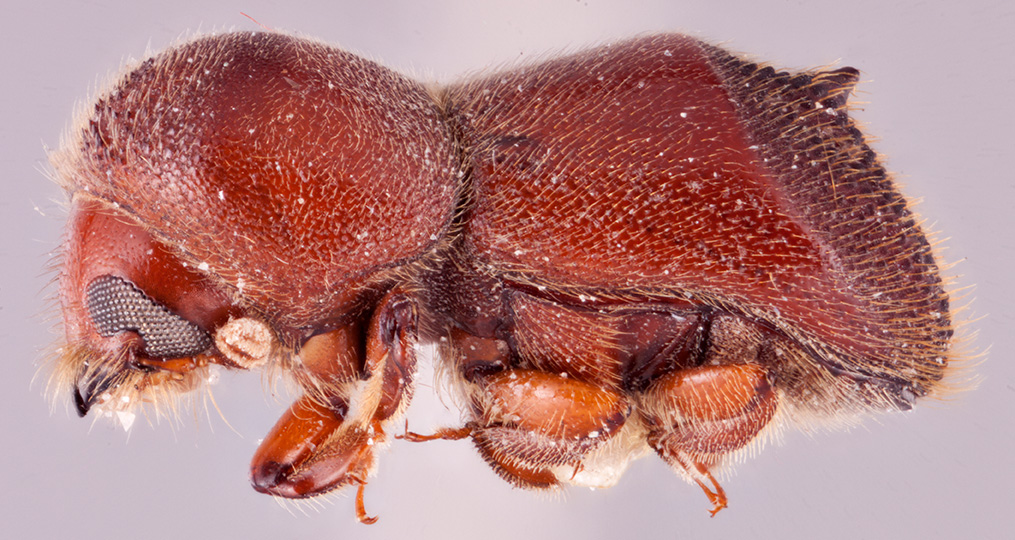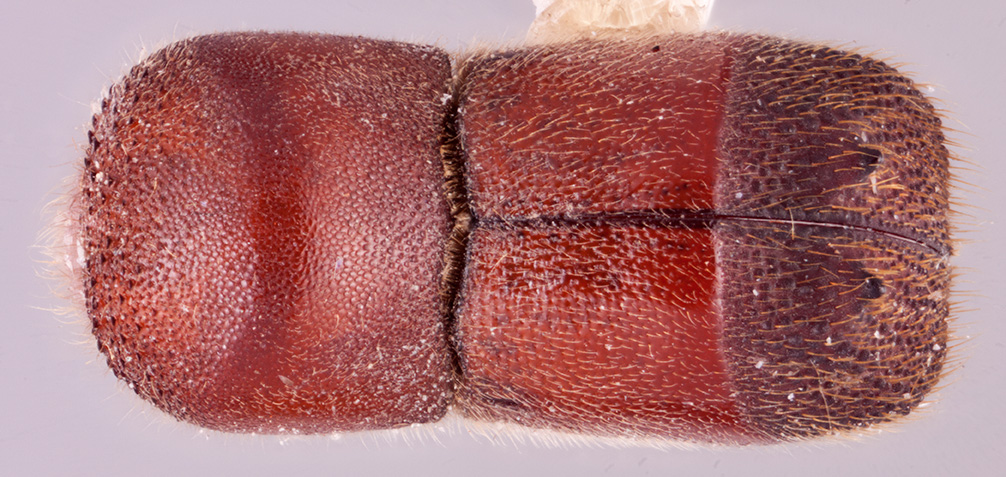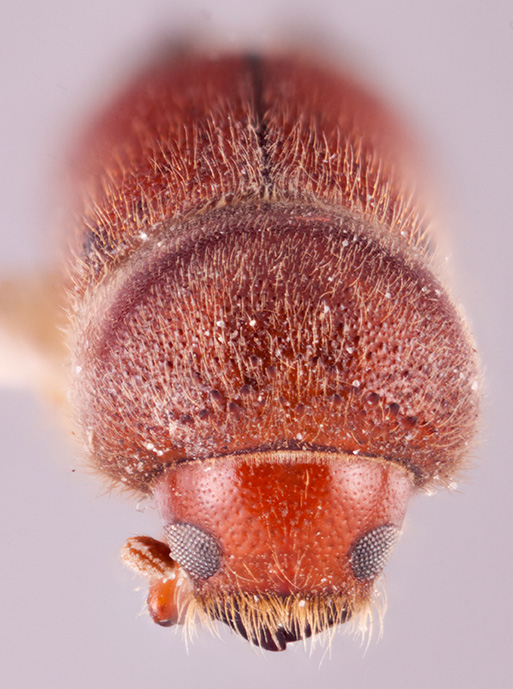Schedlia
|
Schedlia sumatrana; R.K. Osborn |
|
Schedlia sumatrana; R.K. Osborn |
|
Schedlia sumatrana; R.K. Osborn |
|
Schedlia sumatrana; R.K. Osborn |
Taxonomy
Schedlia Browne, 1950: 641.
Diagnosis
Schedlia are large, stout species (4.20−5.30 mm long; 2.15−2.50 times as long as wide). They can be distinguished by the scutellumscutellum:
a shield-like sclerotized plate located at the midpoint of the elytral base
absent; elytral discdisc:
the flat central upper surface of any body part (e.g. pronotum and elytra)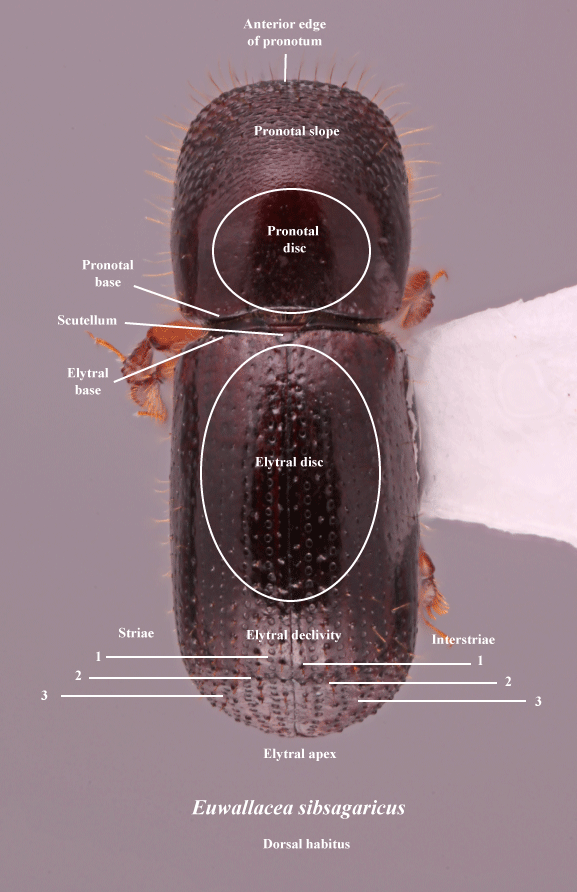 minutely rugoserugose:
minutely rugoserugose:
appearing wrinkled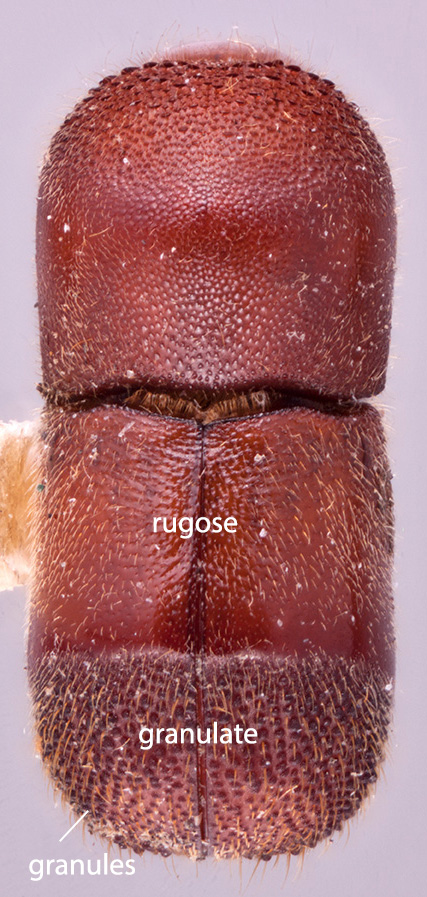 and punctatepunctate:
and punctatepunctate:
set with fine impressed points, appearing as pin pricks
 ; elytral declivitydeclivity:
; elytral declivitydeclivity:
downward slope of either the pronotum or elytra
 clearly distinct from discdisc:
clearly distinct from discdisc:
the flat central upper surface of any body part (e.g. pronotum and elytra) , obliquely truncateobliquely truncate:
, obliquely truncateobliquely truncate:
nearly truncate but rounded not flat in lateral view
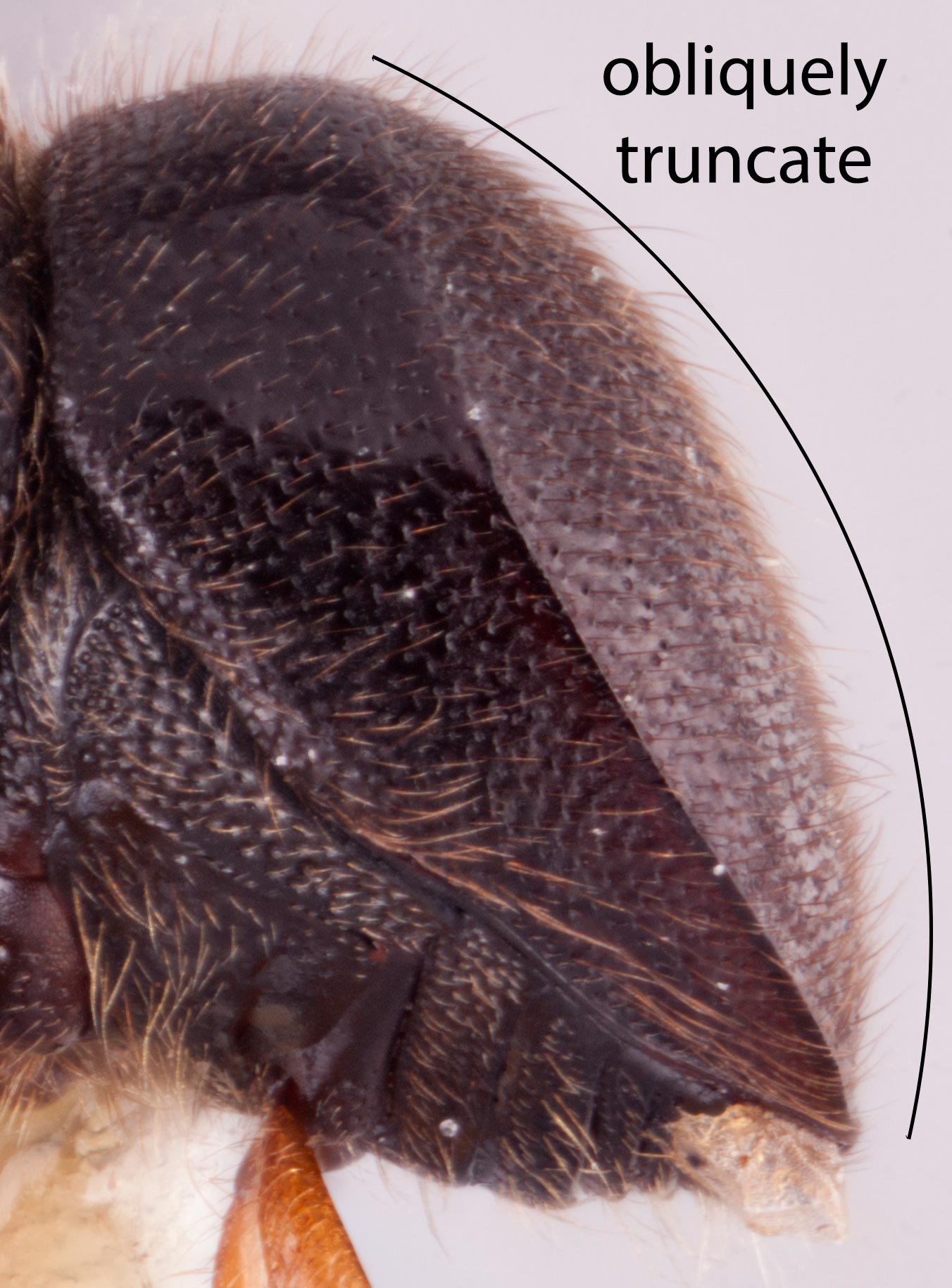 , impunctate, coarsely granulategranulate:
, impunctate, coarsely granulategranulate:
pertaining to a coarse, grainy surface texture
 to tuberculate; elytral bases costate, curved, with conspicuous medialmedial:
to tuberculate; elytral bases costate, curved, with conspicuous medialmedial:
situated near the median plane of the body or body part
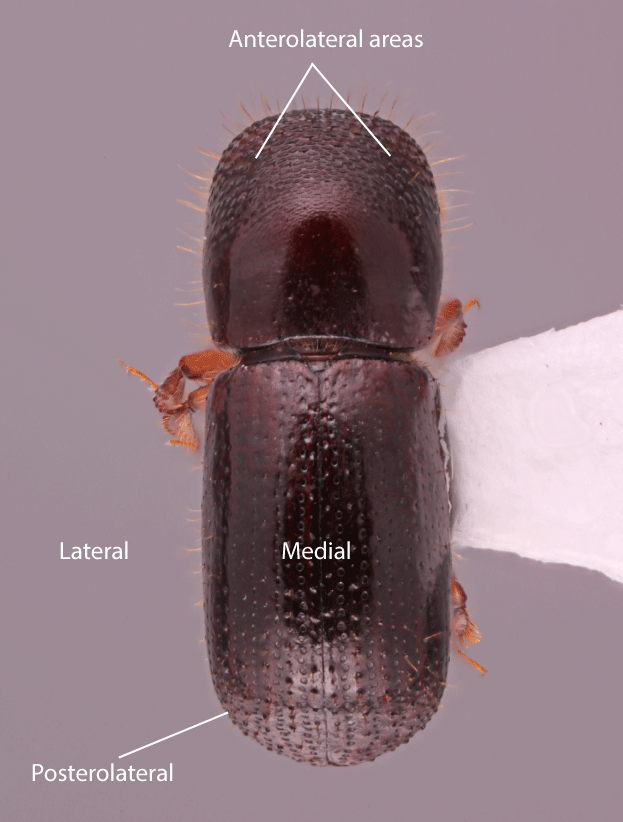 tufts of setaeseta:
tufts of setaeseta:
small hair-like or scale-like structure
denoting an elytralelytral:
pertaining to the elytra
mycangium; antennal clubclub:
the broadened, flattened end of antenna, in Xyleborini comprised of three segments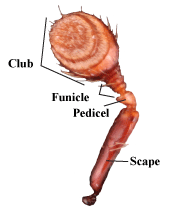 type 4, pubescent; protibiae sickle-like, inflatedinflated:
type 4, pubescent; protibiae sickle-like, inflatedinflated:
blown up; distended
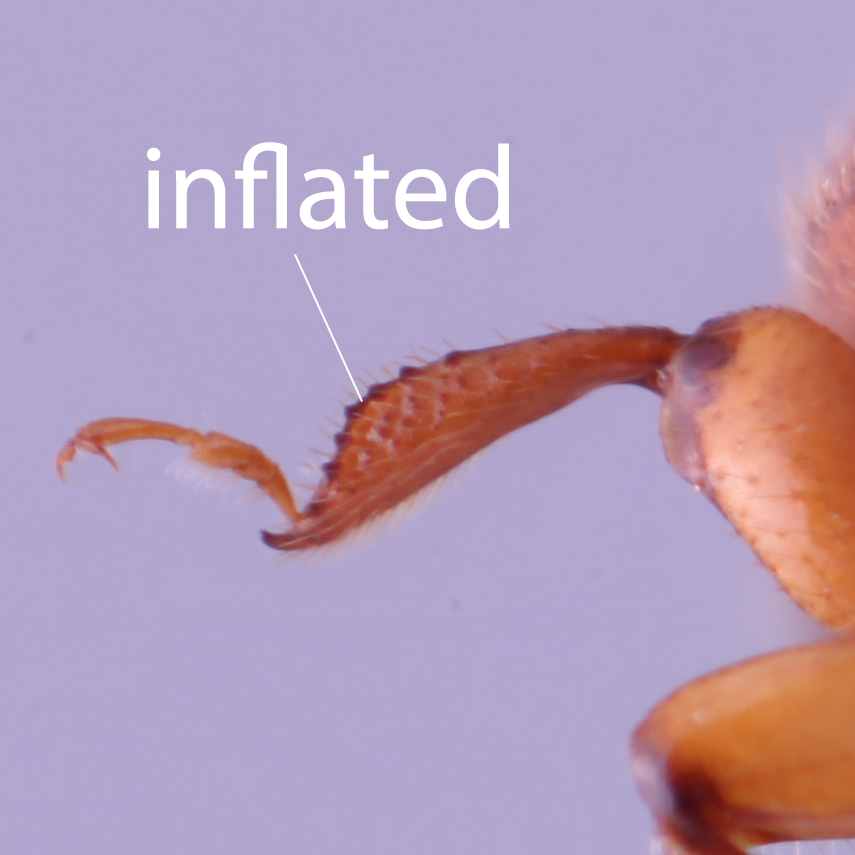 , and granulategranulate:
, and granulategranulate:
pertaining to a coarse, grainy surface texture
 on posteriorposterior:
on posteriorposterior:
toward the rear end; opposite of anterior
 face; and contiguous procoxae.
face; and contiguous procoxae.
May be confused with
Coptodryas and Ambrosiodmus. Schedlia can be distinguished from Ambrosiodmus by the lack of a scutellumscutellum:
a shield-like sclerotized plate located at the midpoint of the elytral base
and from Coptodryas by the declivitydeclivity:
downward slope of either the pronotum or elytra
 clearly separated from discdisc:
clearly separated from discdisc:
the flat central upper surface of any body part (e.g. pronotum and elytra) .
.
Distribution
Paleotropical
Gallery system
The unbranched radial entrance tunnel leads to a single large brood chamber in the longitudinal plane (Browne 1961bBrowne 1961b:
Browne FG. 1961b. The biology of Malayan Scolytidae and Platypodidae. Malayan Forest Records 22: 1-255.).
Remarks
Schedlia species are Dipterocarpaceae specialists.

